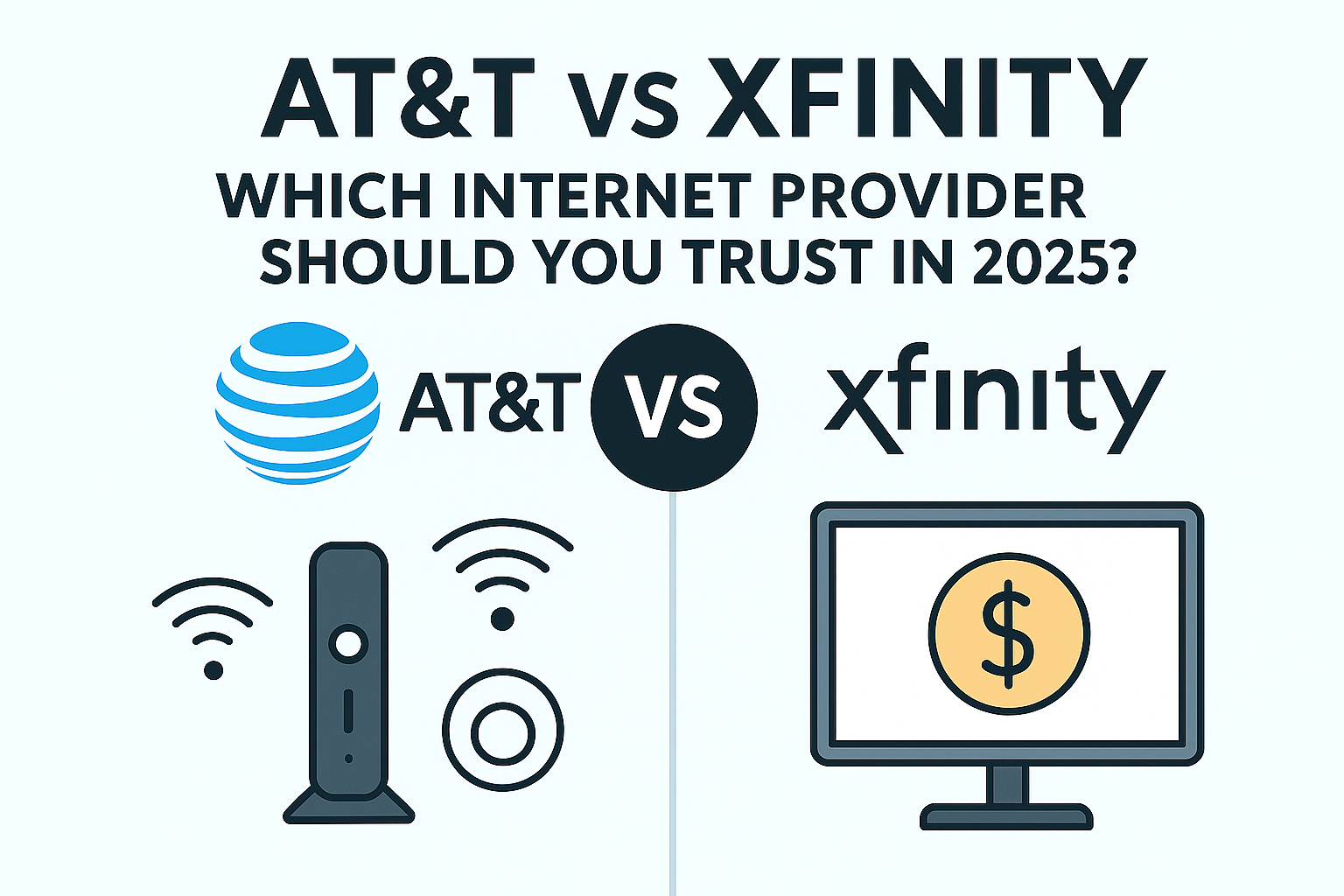
ATT vs Xfinity – Which Internet Provider Should You Trust in 2025?
Moving to a new place is stressful enough, but choosing an internet provider? That part drove me nuts. I’d already used both ATT vs Xfinity at different points in life—Xfinity during college, and AT&T while working from home. This time, though, I couldn’t afford to waste weeks testing what works. I needed something stable, fast, and predictable.
So, I spent two evenings glued to Reddit threads, checking user reviews, and flipping between websites. What started as a quick decision turned into a deep dive. I compared everything: speed, reliability, prices, customer support—down to the fine print most people ignore. If you’re standing at the same crossroads, this article is for you. I’ve put everything I learned into this one place—no fluff, no sales talk.
What’s the Core Difference Between AT&T and Xfinity?
Back when I didn’t know better, I assumed internet was just… internet. But after actually using both AT&T and Xfinity, I realized one key difference changes everything—the connection type.
AT&T runs mostly on fiber optic lines in supported areas, which means the data travels as light through glass. That’s why it’s not only faster, but symmetrical—you get the same speed going up and down. Whether I was uploading files to Google Drive or streaming in 4K, it felt like everything just worked, all the time.
Xfinity, though, is cable-based in most locations. The download speeds look great on paper (and they are decent for things like Netflix or browsing), but uploads are another story. I once tried sending a large video file to my editor using Xfinity—and gave up after two tries. The upload speed just couldn’t keep up.
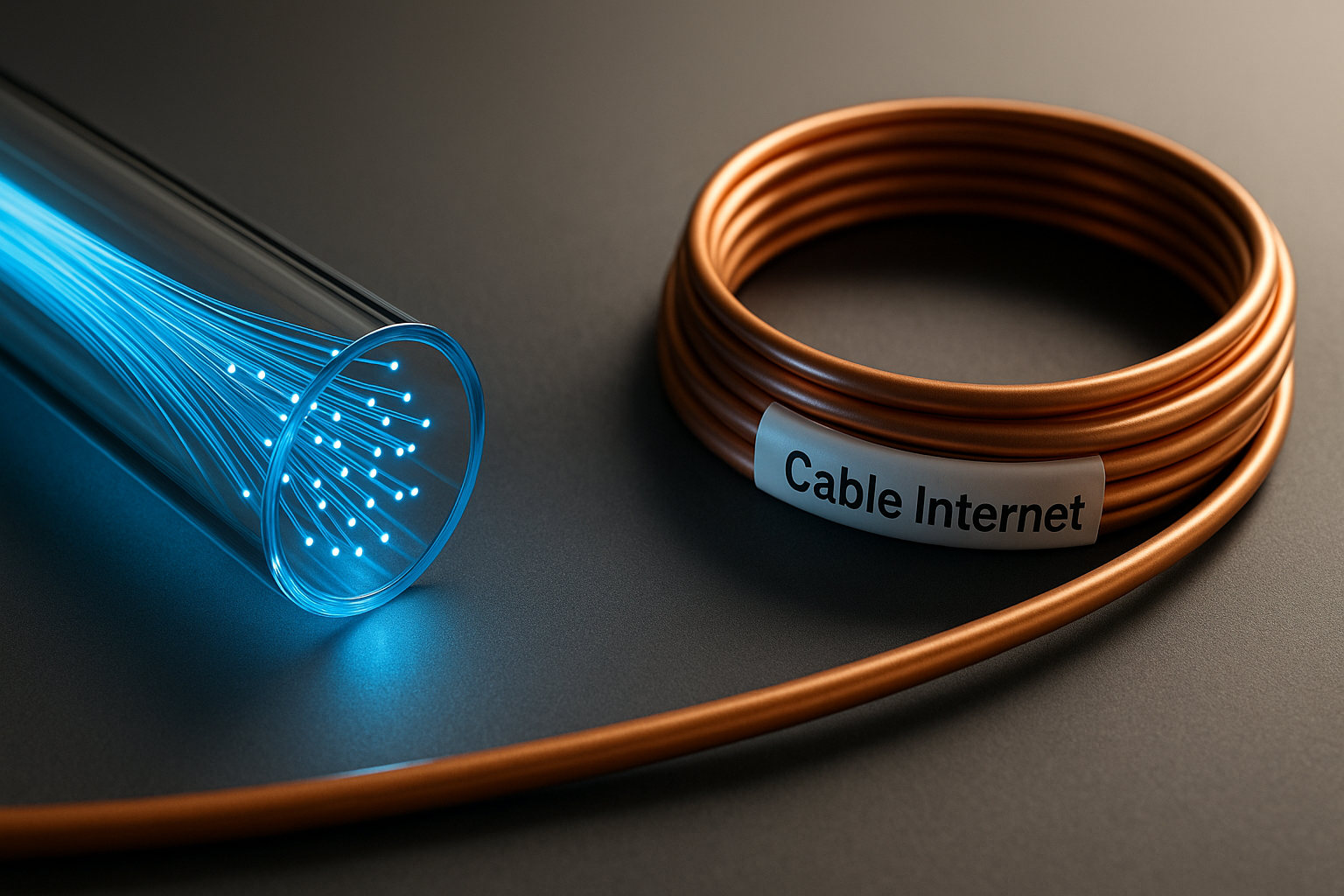
They do offer gigabit and 2-gig plans, but only the downloads are fast. Uploads stay capped around 35 Mbps unless you’re in one of the few areas where they’re testing fiber. So for now, unless you’re lucky enough to live in those test zones, it’s still cable vs fiber.
There’s also a third option from AT&T—Fixed Wireless Internet, or what they call “Internet Air.” It’s basically a 5G connection for places without fiber or DSL. I tested it while visiting family, and while it worked okay for video calls and browsing, I wouldn’t recommend it for gaming or large file uploads.
So yeah, the core difference? AT&T gives you true fiber where available. Xfinity gives you cable—and in some places, that’s your only choice.
Pricing Breakdown – What Will You Actually Pay?
Here’s how AT&T and Xfinity compare in 2025 based on real plan details:
| Plan Type | AT&T Fiber | Xfinity Cable |
| Base 300 Mbps Plan | $55/month (no rental fee) | $40/month (12-month promo) |
| Equipment Fees | Included | $15/month for modem rental |
| Price After Promo | No change | Often increases by $20+ |
| Contract Required | No | Often required for promo deals |
| Unlimited Data | Yes (on fiber) | No (1.2TB cap unless you pay extra) |
| Gift Card/Perks | Up to $150 Visa card on signup | Rare |
| Bundling Discount | Up to $20/month with AT&T Wireless | Minimal or varies |
Xfinity might look cheaper upfront, but once equipment, promo expiration, and hidden charges are factored in, AT&T Fiber turned out to be more cost-effective for me. Especially if you plan to keep the service long-term.
Internet Performance – Who’s Really Faster?
Speed isn’t just about numbers—it’s about how it feels when you’re using it. I’ve had days where I needed to upload a large video file while my partner streamed a movie in 4K. That’s where the true test of an internet provider begins.
With AT&T Fiber, I consistently hit 900+ Mbps for both downloads and uploads. It wasn’t just the speed that impressed me—it was the stability. Even at night, when everyone’s online and the bandwidth gets tight, it holds up. No buffering. No slowdowns. Just smooth, uninterrupted internet.
Xfinity also pushed solid download speeds. On their 1 Gbps plan, I regularly clocked in around 940 Mbps. But here’s the catch—uploads. They peaked at around 35 Mbps. That’s fine for light uploads or photo backups, but it gets frustrating if you’re working with video files or syncing cloud storage.
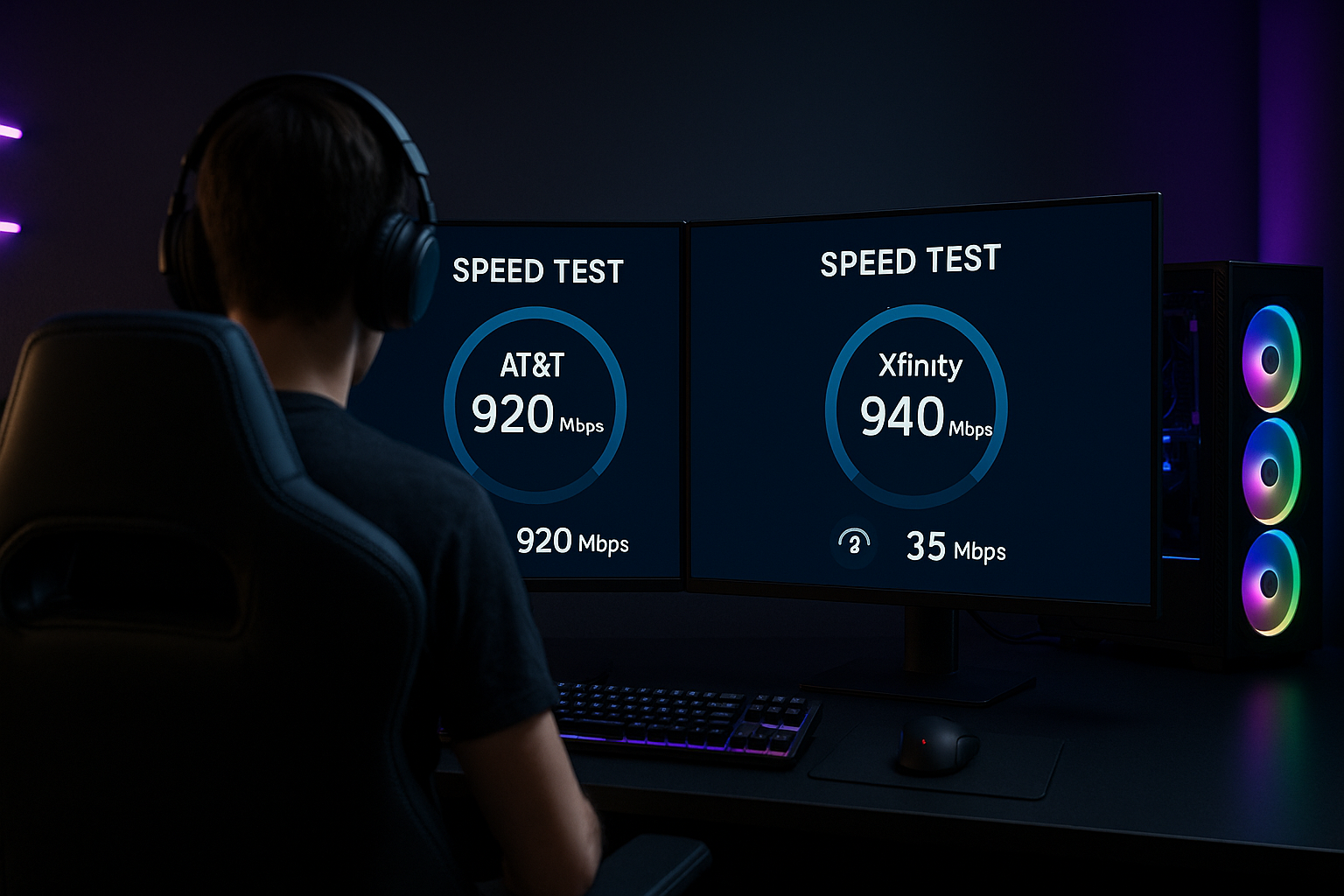
Ping also matters, especially for gaming or video calls. AT&T stayed under 15 ms in most of my tests, while Xfinity hovered closer to 30 ms. That small difference might not matter to casual users, but if you play online games or host virtual meetings, it shows.
Also, during peak evening hours, I noticed a dip with Xfinity. Speeds slowed, and latency spiked. AT&T didn’t budge. That consistency alone made a difference for me. Whether I was watching Netflix or on Zoom, I didn’t have to worry about everyone else in the neighborhood eating up my bandwidth.
To sum it up—both are fast, but only one gave me peace of mind at all hours. And that was AT&T.
Data Caps, Contracts & Customer-Friendly Terms
I’m the kind of person who hates surprises—especially when they come in the form of internet overage charges. That’s why I paid close attention to data caps and fine-print policies when comparing these two.
AT&T wins here without even trying. Their fiber plans come with no data caps. I streamed, uploaded, downloaded, ran cloud backups—and never hit a limit. No warnings, no slowdowns. It was just one less thing to worry about. Plus, they don’t tie you down with annual contracts.
Xfinity’s a little more complicated. Most of their regular plans include a 1.2 TB data cap. If you go over, you either pay extra or upgrade to an unlimited plan—which costs more, obviously. During one month when I was uploading daily backups, I came close to the limit.

Contracts are another thing. Many of Xfinity’s better deals require a one-year or even two-year agreement. And if you try to leave early? Expect early termination fees. With AT&T, I liked the freedom of no contracts. If the service didn’t work for me, I could cancel without jumping through hoops.
There’s also the issue of pricing honesty. AT&T’s bills were easy to understand. What I saw on the checkout page was what I got on my bank statement. Xfinity? Not always. Sometimes a promo expired or a line item fee crept in.
So if you’re like me and want a clean, no-surprises internet experience, AT&T makes life easier. No caps, no contracts, and no hidden tricks.
Availability & Expansion Plans in 2025
The biggest deal-breaker for most people isn’t speed or price—it’s availability. I’ve had friends rave about AT&T Fiber, only to find out it’s not even offered in their zip code.
AT&T is aggressively expanding its fiber network. In 2025, they’ve already pushed coverage deeper into parts of Texas, Georgia, California, Illinois, and North Carolina. Suburban neighborhoods are getting attention first, but denser urban zones usually get fiber first. If you’re in one of those fiber-ready areas, you’re in luck.
On the other hand, Xfinity has a broader reach. It covers more than 40 states and reaches a lot of rural communities where fiber isn’t even a conversation yet. When I stayed at a family member’s place in a small town, Xfinity was the only wired option available. In those situations, it’s more about getting anything reliable than choosing the best.
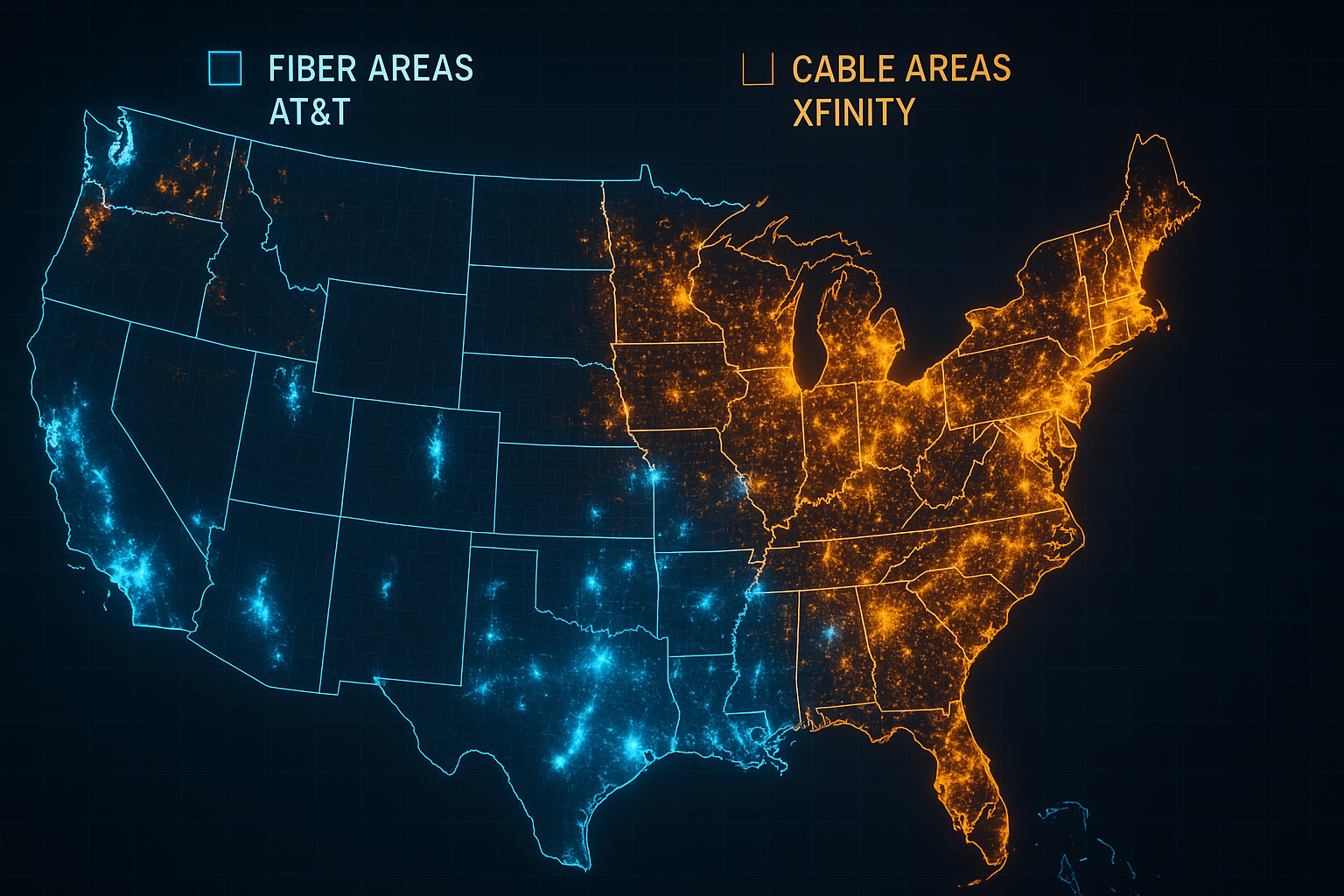
But here’s where things shift: AT&T’s fixed wireless 5G service, called Internet Air, is meant to close those rural gaps. I tried it while traveling and it worked fine for casual tasks—email, YouTube, social scrolling. Not ideal for uploading content or gaming, but much better than nothing.
If you’re moving or house-hunting, I strongly recommend using both companies’ coverage maps before signing a lease or buying a home. It sounds extreme, but the fast internet makes or breaks daily life now—especially if you work remotely.
So in summary: AT&T is great where it’s available, and they’re working hard to reach more people. Xfinity still has the upper hand in total footprint. But if you have both, fiber wins. Every time.
Setup, Installation & App Experience
I’ve done my fair share of internet setups over the years, and I can tell you—some are smooth, some are not. With AT&T, the experience felt fast and well-organized. A technician came right on schedule and had everything connected in about an hour. The router they provided was strong enough to cover my whole house. I didn’t have to buy any signal boosters.
What I appreciated most was their Smart Home Manager app. It let me pause Wi-Fi on certain devices (like my TV during work hours) and even showed which gadgets were hogging bandwidth. Simple to use, but super helpful when your home is packed with connected gear.
Xfinity’s setup was decent too. They offer professional installation or a self-install kit. I went with the tech visit to avoid any hiccups. The technician was polite and quick, but the process took slightly longer. The modem/router combo (I had the XB8) was good, but not great. Signal started to dip in the far corner of my house until I bought a third-party extender.
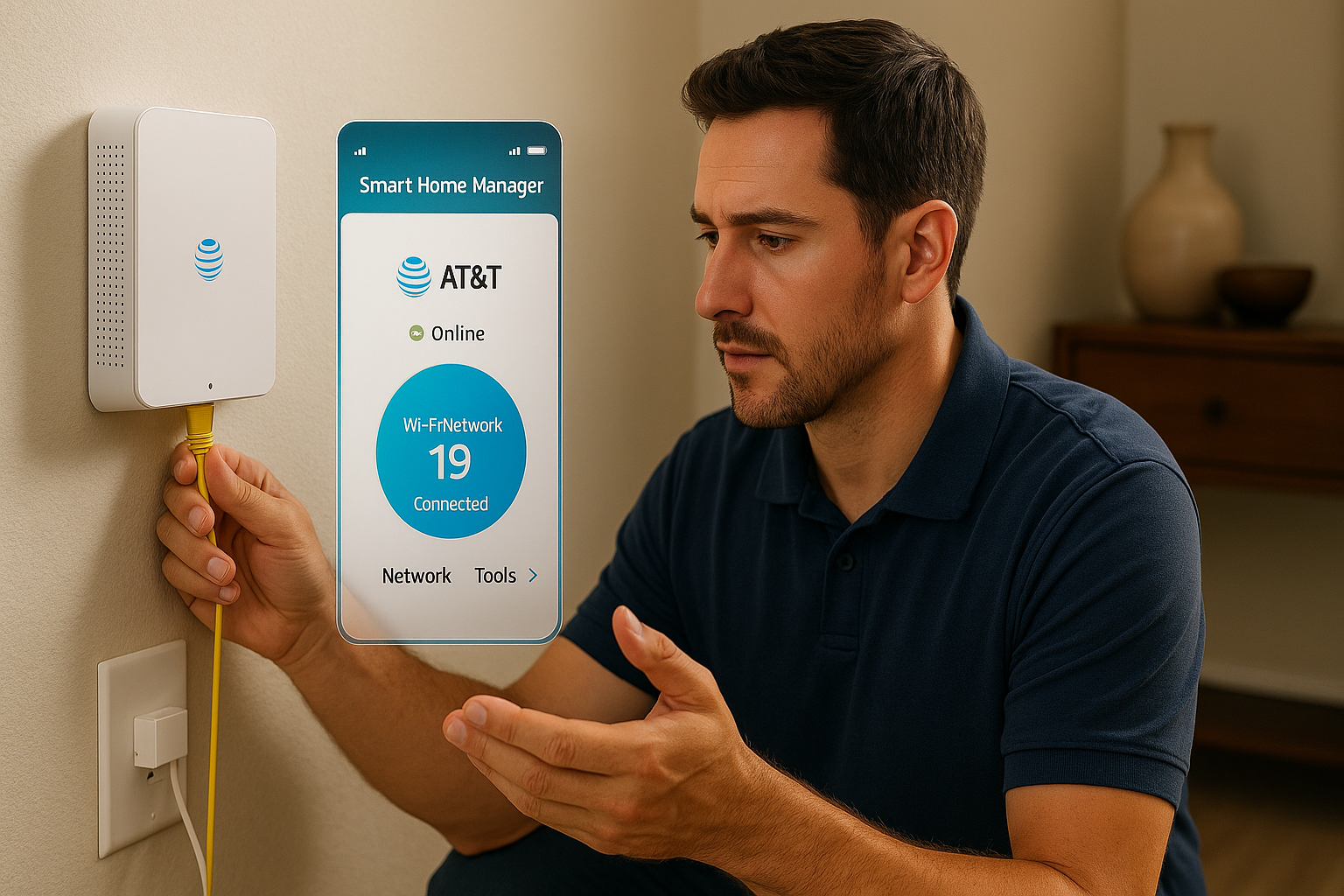
Xfinity’s app was okay. You can restart your modem or check usage, but it didn’t give me as much control as AT&T’s version. There was no option to prioritize devices or limit traffic like I could with Smart Home Manager.
And one thing I didn’t love: Xfinity charges $15/month for equipment unless you bring your own. That adds up. With AT&T, there’s no rental fee at all—it’s just part of the package.
In short, both installations went fine, but AT&T felt more seamless. Better hardware, better app, no surprise charges. And honestly, in 2025, you shouldn’t have to tinker with your internet setup every other week. AT&T got that right.
Customer Support – Who Listens Better?
When your internet goes down, the last thing you want is to fight a robot menu. I’ve had support experiences with both AT&T and Xfinity—and let’s just say one left me waiting, the other didn’t.
With AT&T, I reached a live agent in under five minutes through the app. The rep actually understood my issue—something about a regional node—and got it fixed within the hour. They even followed up with a text message to confirm it was resolved. It felt like someone was actually on the other end who cared.
Xfinity? It’s hit or miss. I once waited nearly 30 minutes just to speak to someone about a billing question. The chatbot kept redirecting me to pages I’d already read. And when I finally got through, the rep couldn’t help right away. I had to call back the next day.
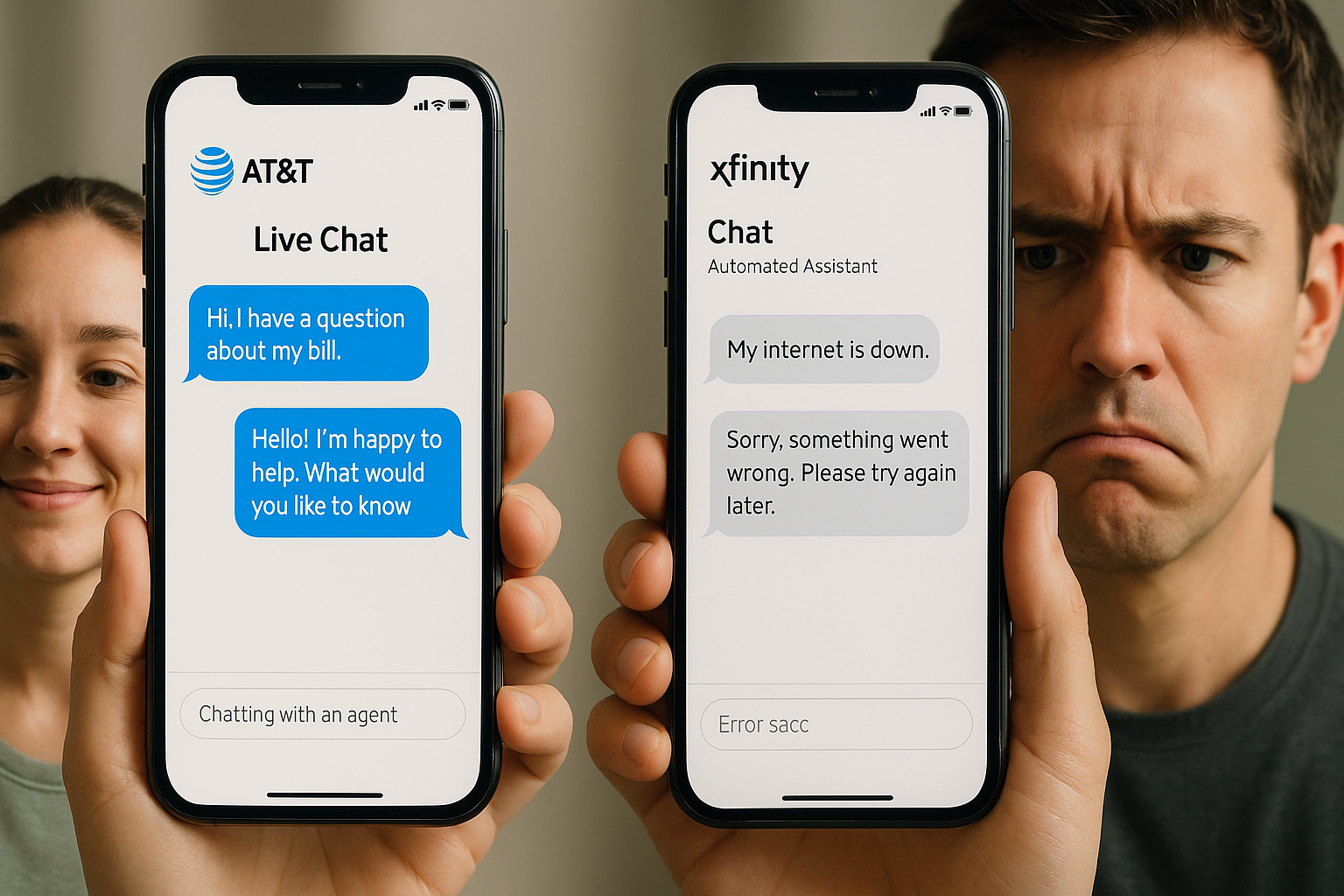
Looking at national ratings tells a similar story. In the 2024 ACSI report, AT&T scored 75/100 while Xfinity landed at 66. That gap feels real when you’ve got an issue and need a quick fix. Even on Reddit, folks talk more positively about AT&T’s support than Xfinity’s.
And if you’re the type who likes handling things yourself, AT&T’s app makes it easy to troubleshoot without picking up the phone. Xfinity’s app tries, but it doesn’t go as deep.
Bottom line? When things go wrong—and eventually they will—AT&T makes it easier to get back online without losing your mind. That peace of mind goes a long way.
Extra Perks & Bundled Features
Let’s face it—sometimes the extras are what tip the scale. While both AT&T and Xfinity offer perks, I noticed a few clear differences in what they actually bring to the table.
Starting with TV and streaming, AT&T gives you access to DIRECTV Stream. I bundled it with my internet plan, and it worked flawlessly with no buffering, even on multiple devices. The channel lineup was solid, and it integrated nicely with smart TVs and the app. You can watch live shows, sports, or recorded content without a hitch.
Xfinity offers Xfinity Flex, which is their 4K streaming box for internet-only customers. It’s okay if you just want access to Netflix or Peacock, but it felt more like a basic streaming tool than a real TV package. If you want full cable-like service, you’ll have to pay for Xfinity TV separately, and that’s not cheap.
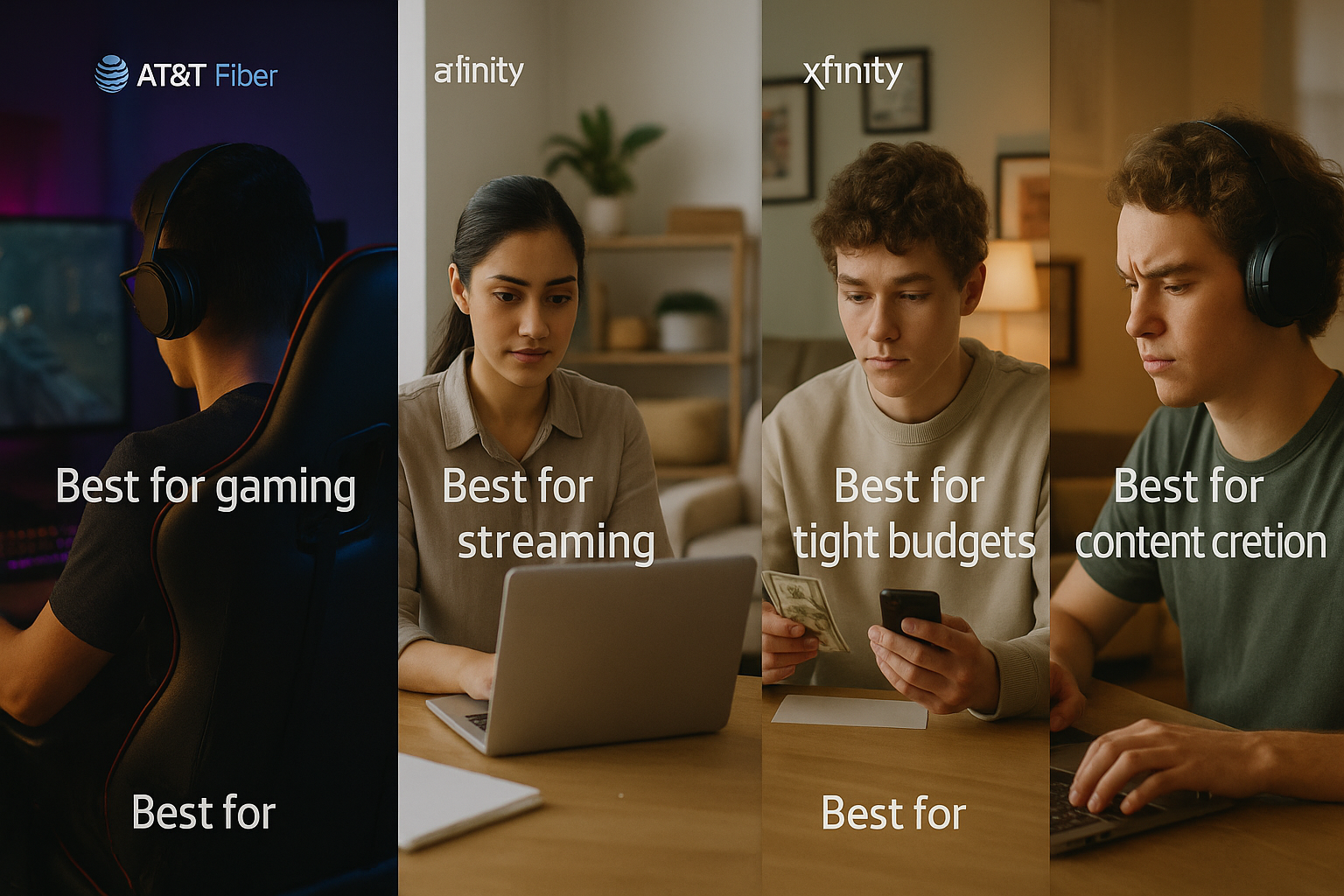
For mobile services, AT&T Wireless has nationwide coverage and bundled discounts. I switched my cell service to them to save on the fiber plan—and it worked. They knocked off $20/month just for combining bills.
Xfinity Mobile is also an option. It’s cheaper upfront and uses Verizon’s network, which is reliable. But unless you’re already deep in the Xfinity ecosystem, it doesn’t offer much incentive to switch. The discounts weren’t as strong when I priced them out.
Security-wise, AT&T includes basic online protection and parental controls at no extra cost. I could filter content and block unsafe websites with a few taps in their app. Xfinity, however, charges $5/month for their xFi Advanced Security. It works well, but having to pay extra for something that should be standard was disappointing.
In summary, AT&T gives more perks without squeezing your wallet. Their bundles actually save you money and offer full features. Xfinity’s extras are functional but often locked behind additional charges.
Which One Is Better For (Use Cases)?
After spending months with both services, I realized that the “best” provider really depends on what kind of internet user you are. Here’s how it breaks down based on real-life use cases:
For Gamers – Go with AT&T. The lower ping, faster upload speeds, and stable connection during peak hours gave me a serious edge in online matches. Xfinity worked, but I had occasional lag spikes, especially at night.
For Remote Workers – AT&T wins again. I could be on Zoom all day, upload big design files, and sync cloud drives without any hiccups. Xfinity handled most work tasks fine, but the upload speed sometimes delayed my file sharing.
For Families with Multiple Devices – AT&T held up better when everyone was online. Between kids streaming, my work meetings, and smart home gadgets running nonstop, the fiber network stayed strong. Xfinity occasionally slowed down when the house was full.
For Budget Users – Xfinity offers lower entry-level pricing, especially on promotional plans. If you’re just browsing, streaming, or using a few devices, their basic packages are cheaper—just make sure to account for equipment fees and post-promo rate hikes.
For Content Creators & Streamers – Definitely AT&T. Whether you’re uploading to YouTube, live-streaming on Twitch, or backing up large video files, symmetrical upload speeds make a massive difference. Xfinity’s upload limits are frustrating in this case.
So if you’re picking based on how you actually use the internet, AT&T takes the lead in performance-heavy roles, while Xfinity works for lighter or more cost-conscious use.
Final Thoughts – Which Provider Is Right for You in 2025?
After testing both and digging through reviews, bills, and service calls, my final take is simple: If you have access to AT&T Fiber, it’s the smarter choice.
The speed consistency, no data caps, symmetrical uploads, and straightforward pricing made a big difference in my daily routine. I never had to worry about lag, surprise fees, or hitting some invisible limit halfway through the month. It just worked—and that’s what good internet should do.
Xfinity, on the other hand, is still a strong option—especially if you live where fiber isn’t available. Their coverage is wider, and for light users or families who mostly stream and browse, it gets the job done. But you’ll need to keep an eye on fees and plan renewals.
So here’s my honest suggestion:
- Choose AT&T Fiber if you’re a gamer, remote worker, or content creator.
- Pick Xfinity if fiber isn’t available and you’re looking for short-term savings or wide availability.
This wasn’t just a spec comparison—it came from real use, multiple addresses, and hours of research. I hope it saves you the hassle I went through.
Next up, I’ll tackle the FAQs and a comparison table to help you decide even faster.
FAQ
You have questions, we have answers
